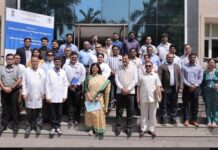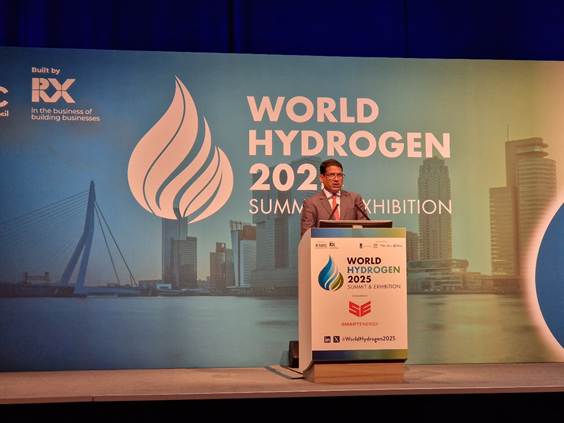MAY 20: India’s strategic ambitions in green hydrogen and renewable energy took center stage at the World Hydrogen Summit 2025 in Rotterdam, where Shri Santosh Kumar Sarangi, Secretary, Ministry of New & Renewable Energy (MNRE), delivered a keynote address outlining the country’s roadmap for clean energy leadership.
During his speech, the Secretary emphasized India’s goal of becoming a global hub for green hydrogen production, backed by its vast and rapidly expanding renewable energy capacity. With more than 223 GW of installed renewable capacity—including 108 GW from solar and 51 GW from wind—India is among the world’s fastest-growing clean energy markets. These achievements, he noted, lay the foundation for the country’s broader ambition to attain energy independence by 2047 and net zero emissions by 2070.
A cornerstone of this vision is the National Green Hydrogen Mission, launched in 2023 with an initial investment of USD 2.4 billion. This mission aims to:
-
Build 5 million metric tonnes of green hydrogen production capacity by 2030
-
Avoid nearly 50 million tonnes of CO₂ emissions annually
-
Attract USD 100 billion in investments
-
Generate over 600,000 jobs
India has already made significant headway in scaling its green hydrogen ecosystem. The government has allocated 862,000 tonnes per annum (TPA) of green hydrogen production capacity to 19 companies, and 3,000 MW of annual electrolyzer manufacturing capacity has been awarded to 15 firms. Pilot projects are currently underway in steel, mobility, and shipping sectors.
Additionally, India has launched a Green Hydrogen Certification Scheme to ensure credible production standards. The mission follows a “Whole-of-Government” approach, with policies supporting fast-track development. Notably, green hydrogen and ammonia plants have been exempted from environmental clearance, and Kandla, Paradip, and Tuticorin ports are being developed as hydrogen hubs.
Fifteen Indian states have announced their own green hydrogen policies, creating a supportive policy environment. Despite this progress, challenges such as high production costs, infrastructure gaps, and lack of standardized frameworks remain obstacles to scaling the hydrogen economy.
Shri Sarangi invited summit participants to visit the India Pavilion to explore collaboration opportunities with Indian companies, reinforcing India’s vision not just to meet its domestic green hydrogen needs, but to emerge as a global exporter by 2030.



















